Mastering long-distance cycling is an endeavour that combines physical prowess, mental fortitude, and strategic planning. It’s a journey marked not just by miles but by the transformative experience of pushing one’s limits. This article is dedicated to all cycling enthusiasts aiming to conquer long distances, whether in preparation for a century ride, a gran fondo, a 400km audax or simply to achieve personal milestones.
Table of Contents
ToggleWe delve into comprehensive endurance training strategies that are key to building the stamina and strength required for such feats. Our focus extends beyond just logging miles; we explore structured workout plans, cross-training techniques, and the importance of rest and recovery in an endurance cyclist’s regimen. Additionally, we provide practical tips on nutrition and hydration, crucial elements often underestimated in long-distance cycling.
Understanding common mistakes is just as important as knowing what to do right; hence, we dissect frequent pitfalls that cyclists encounter, from inadequate pacing to neglecting bike maintenance. Whether you are a seasoned long-distance cyclist or gearing up for your first major ride, this article serves as a holistic guide. It aims to equip you with the knowledge and confidence to not only reach your cycling goals but to enjoy every pedal stroke of the journey.

Key Strategies for Long-Distance Cycling Endurance Training
Long-distance cycling requires a combination of strength, endurance, and mental toughness. The key strategies for training include gradually increasing your mileage, incorporating interval training, and focusing on your cycling technique. It’s also essential to listen to your body and rest when needed.
Gradually increasing your mileage allows your body to adapt to the demands of long-distance cycling. Start with a distance that is comfortable for you and increase it by 10% each week. This gradual increase helps to prevent injuries and overtraining.
Interval training involves alternating between periods of high-intensity cycling and recovery. This type of training can improve your cardiovascular fitness and increase your cycling speed.
Focusing on your cycling technique can also improve your efficiency and reduce the risk of injuries. This includes maintaining a proper cycling posture and using the correct gear.
Rest is an essential part of training. It allows your body to recover and adapt to the increased workload. Make sure to include rest days in your training schedule and get plenty of sleep.
Nutrition is another key aspect of long-distance cycling training. It’s important to fuel your body with the right nutrients before, during, and after your rides. This includes carbohydrates for energy, protein for muscle recovery, and fluids for hydration.
In addition to these strategies, it’s also important to stay motivated and enjoy your training. Set realistic goals, track your progress, and celebrate your achievements. Remember, the journey is just as important as the destination.
Finally, don’t forget to check your equipment before each ride. This includes your bike, helmet, and other cycling gear. Proper equipment can enhance your performance and ensure your safety during your rides.

The Importance of Nutrition in Long-Distance Cycling Endurance Training
Nutrition plays a crucial role in long-distance cycling endurance training. It provides the energy you need to sustain your rides and aids in recovery after training.
Carbohydrates are the primary source of energy for long-distance cycling. They are stored in your muscles and liver as glycogen, which is used for energy during exercise. It’s important to consume a diet high in carbohydrates to replenish your glycogen stores.
Protein is essential for muscle recovery and repair. After a long ride, your muscles are damaged and need protein to repair and grow. Consuming a protein-rich meal or snack after your ride can aid in recovery.
Hydration is also crucial during long-distance cycling. Dehydration can impair your performance and increase the risk of heat-related illnesses. It’s important to drink fluids before, during, and after your rides to stay hydrated.
Electrolytes, such as sodium and potassium, are lost through sweat during exercise. They are important for muscle function and fluid balance. Consuming a sports drink or electrolyte supplement during your ride can help to replace these lost electrolytes.
In addition to these nutrients, it’s also important to consume a balanced diet that includes a variety of fruits, vegetables, whole grains, and lean proteins. These foods provide a wide range of vitamins and minerals that support overall health and performance.
Finally, it’s important to listen to your body and adjust your nutrition based on your needs. This includes eating more when you’re training harder or longer, and eating less when you’re training less. Remember, nutrition is not one-size-fits-all, and what works for one person may not work for another.
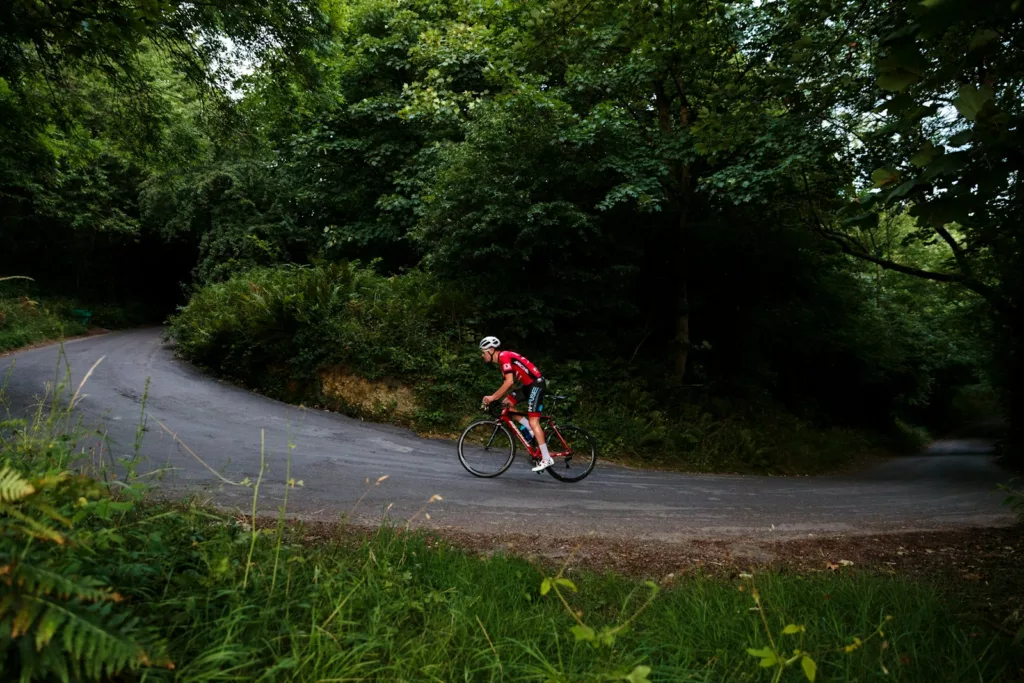
The Role of Recovery in Long-Distance Cycling Endurance Training
Recovery is a crucial component of long-distance cycling endurance training. It allows your body to adapt to the stress of training, repair damaged tissues, and strengthen your muscles.
There are several strategies for enhancing recovery after long-distance cycling. These include proper nutrition, adequate sleep, and active recovery.
Proper nutrition is essential for recovery. After a long ride, your body needs carbohydrates to replenish glycogen stores and protein to repair damaged muscles. Consuming a meal or snack that includes both carbohydrates and protein within 30 minutes of finishing your ride can enhance recovery.
Adequate sleep is also crucial for recovery. During sleep, your body produces growth hormone, which aids in muscle repair and growth. Aim for 7-9 hours of sleep per night to support recovery.
Active recovery involves light exercise that promotes blood flow and aids in muscle recovery. This can include light cycling, walking, or yoga. Active recovery can help to reduce muscle soreness and stiffness after a long ride.
In addition to these strategies, it’s also important to listen to your body and rest when needed. If you’re feeling tired or sore, it may be a sign that you need more recovery time. Remember, more is not always better when it comes to training, and rest is just as important as the rides themselves.

Improving Cycling Technique for Better Endurance
Improving your cycling technique can enhance your efficiency and endurance during long-distance rides. There are several aspects of cycling technique that can be improved, including your cycling posture, pedal stroke, and gear use.
Maintaining a proper cycling posture can reduce the strain on your muscles and joints and improve your efficiency. This includes keeping your back straight, your elbows slightly bent, and your knees pointing straight ahead.
Your pedal stroke is another important aspect of cycling technique. A smooth, circular pedal stroke can improve your efficiency and reduce the risk of injuries. This involves pushing down on the pedals during the downstroke and pulling up on the pedals during the upstroke.
Using the correct gear can also improve your cycling technique. Using a gear that is too high can strain your muscles and joints while using a gear that is too low can waste energy. The correct gear allows you to maintain a steady cadence and conserve energy for long rides.
In addition to these techniques, it’s also important to practice your cycling skills regularly. This includes handling skills, such as cornering and descending, and group riding skills, such as drafting and communicating with other riders.
Finally, don’t forget to warm up before your rides and cool down afterwards. This can prepare your body for the ride, enhance your performance, and aid in recovery.
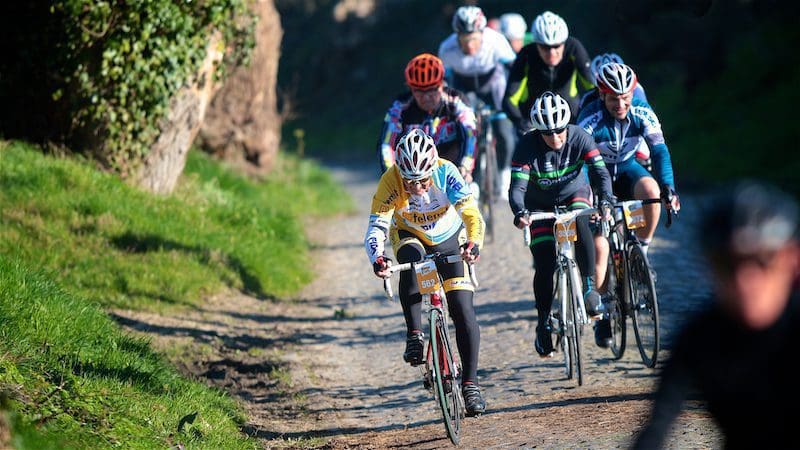
Preventing Injuries During Long-Distance Cycling Endurance Training
Injuries can derail your long-distance cycling endurance training. However, there are several strategies for preventing injuries, including proper bike fit, strength training, and listening to your body.
A proper bike fit is crucial for preventing injuries. If your bike is not properly fitted to your body, it can cause strain on your muscles and joints and lead to injuries. A bike fit specialist can adjust your bike to fit your body and riding style.
Strength training can also prevent injuries by strengthening your muscles and improving your balance and stability. This includes exercises for your core, legs, and upper body. Strength training can also improve your cycling performance and endurance.
Listening to your body is another important strategy for preventing injuries. If you’re feeling pain or discomfort during your rides, it may be a sign of an injury. It’s important to rest and seek medical advice if needed.
In addition to these strategies, it’s also important to warm up before your rides and cool down afterwards. This can prepare your muscles for the ride and aid in recovery.
Finally, don’t forget to wear a helmet and other safety gear during your rides. This can protect you from injuries in case of a fall or collision.
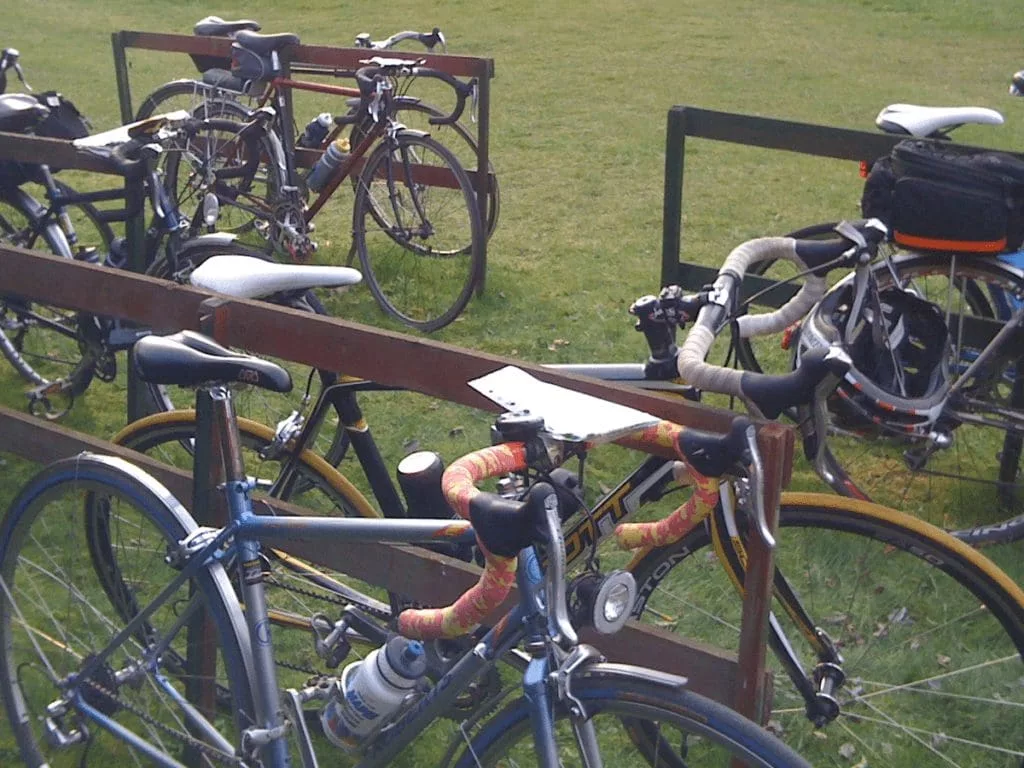
Staying Motivated During Long-Distance Cycling Endurance Training
Staying motivated during long-distance cycling endurance training can be challenging. However, there are several strategies for maintaining motivation, including setting goals, tracking your progress, and finding a training partner.
Setting goals can provide a sense of direction and purpose for your training. These goals should be specific, measurable, achievable, relevant, and time-bound (SMART). For example, you might set a goal to complete a 100-mile ride in under 6 hours within the next 6 months.
Tracking your progress can also boost your motivation. This can include tracking your mileage, speed, or time on the bike. Seeing your progress over time can provide a sense of achievement and motivate you to keep going.
Finding a training partner can make your rides more enjoyable and motivate you to train harder. A training partner can provide companionship, competition, and support during your rides.
In addition to these strategies, it’s also important to enjoy your rides and celebrate your achievements. Remember, the journey is just as important as the destination, and every ride is an opportunity to enjoy the outdoors, improve your fitness, and challenge yourself.
Finally, don’t forget to take care of your body and mind. This includes eating a healthy diet, getting plenty of sleep, and managing stress. Taking care of your overall health can enhance your performance and motivation during your rides.
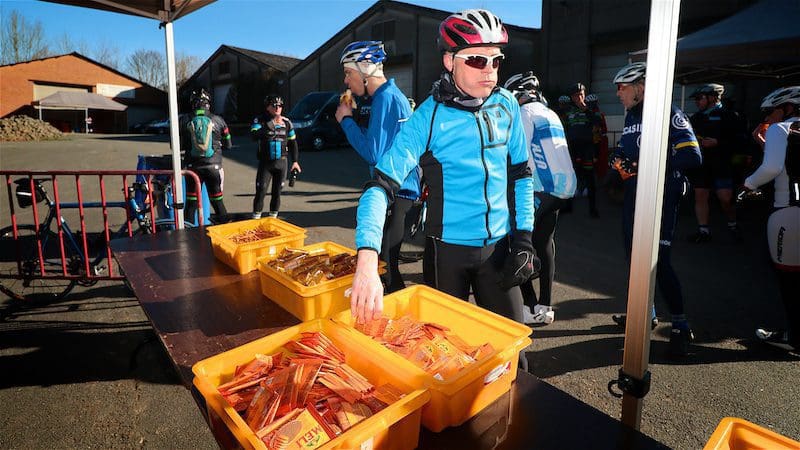
Adjusting Your Training Schedule for Long-Distance Cycling
Adjusting your training schedule for long-distance cycling can optimise your performance and recovery. There are several factors to consider when adjusting your schedule, including your training volume, intensity, and recovery.
Your training volume refers to the amount of time or distance you spend on the bike. For long-distance cycling, it’s important to gradually increase your volume to adapt to the demands of long rides. However, it’s also important to include rest days in your schedule to allow for recovery.
Your training intensity refers to the effort level of your rides. This can be measured by your heart rate, power output, or perceived exertion. For long-distance cycling, it’s important to include a mix of low-intensity, moderate-intensity, and high-intensity rides in your schedule.
Your recovery refers to the time you spend resting and recovering from your rides. This includes sleep, nutrition, and active recovery. For long-distance cycling, it’s important to prioritise recovery to prevent overtraining and injuries.
In addition to these factors, it’s also important to listen to your body and adjust your schedule based on your needs. If you’re feeling tired or sore, it may be a sign that you need more recovery time. Remember, more is not always better when it comes to training, and rest is just as important as the rides themselves.
Finally, don’t forget to consider your other commitments when adjusting your schedule. This includes work, family, and social commitments. Balancing your training with your other commitments can prevent burnout and enhance your enjoyment of cycling.
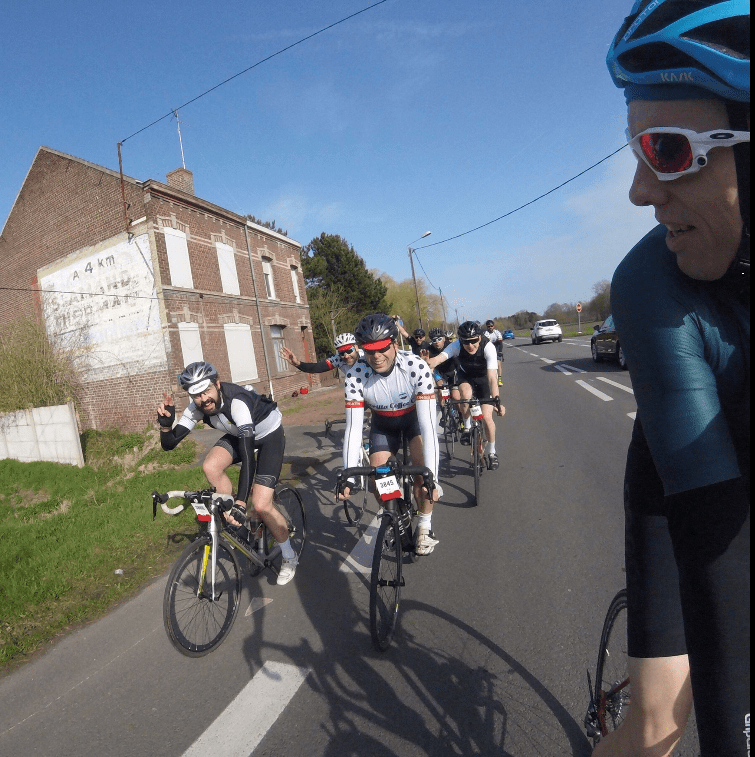
Essential Equipment for Long-Distance Cycling Endurance Training
The right equipment can enhance your performance and comfort during long-distance cycling endurance training. Here are some essential items:
- Bike: A reliable and comfortable bike is the most important piece of equipment. Consider a road bike for speed and efficiency, or a touring bike for comfort and durability.
- Helmet: A helmet is essential for safety. Make sure it fits properly and meets safety standards.
- Cycling shoes: Cycling shoes can improve your efficiency by allowing you to push and pull on the pedals.
- Cycling clothes: Cycling clothes can enhance your comfort and performance. Look for clothes that are breathable, moisture-wicking, and fit well.
- Water bottle or hydration pack: Staying hydrated is crucial during long rides. A water bottle or hydration pack can make it easy to drink while riding.
- Nutrition: Energy bars, gels, and drinks can provide the fuel you need for long rides.
- Repair kit: A repair kit can help you fix minor issues on the road, such as a flat tyre or loose bolt.
- Lights and reflectors: If you’ll be riding in low light conditions, lights and reflectors can enhance your visibility and safety.
- GPS or cycling computer: A GPS or cycling computer can help you navigate your route and track your performance.
- First aid kit: A first aid kit can help you treat minor injuries on the road.
Remember, the right equipment can make a big difference in your comfort and performance during long-distance cycling. Take the time to choose the right items for your needs and preferences.
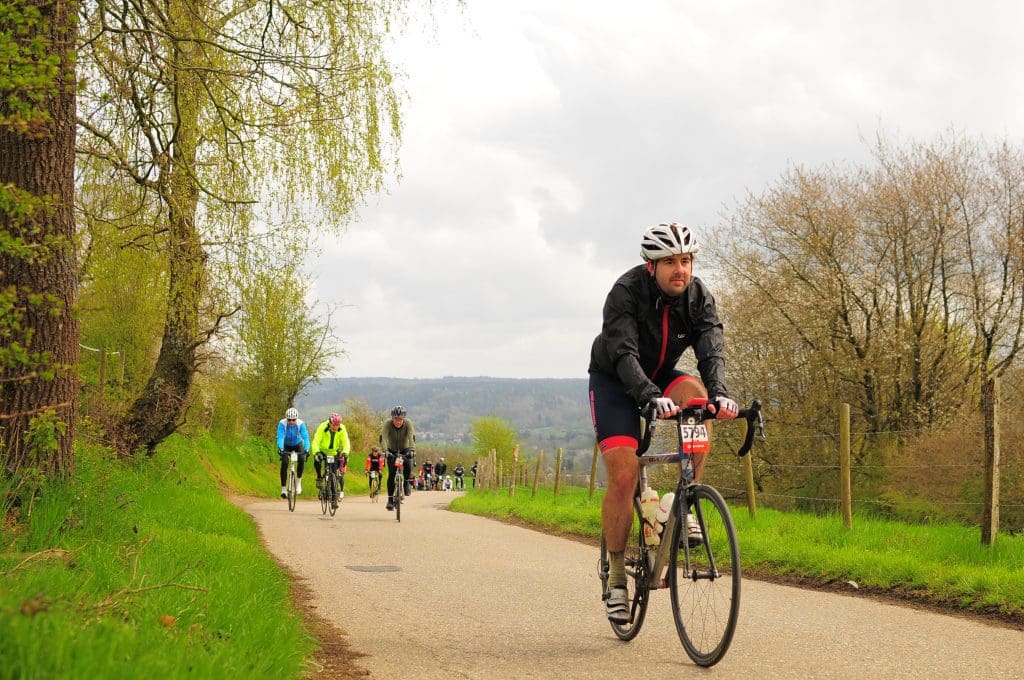
Measuring Progress in Long-Distance Cycling Endurance Training
Measuring your progress can provide a sense of achievement and motivate you to keep going. There are several ways to measure your progress in long-distance cycling endurance training, including tracking your mileage, speed, and fitness.
Tracking your mileage can provide a clear indication of your progress. You can aim to gradually increase your mileage over time, or aim to complete a certain distance in a certain time.
Your speed is another measure of progress. You can aim to increase your average speed over time or aim to complete a certain distance in a shorter time.
Your fitness is another important measure of progress. This can include your cardiovascular fitness, strength, and flexibility. You can measure your fitness through fitness tests, such as a time trial or a maximum heart rate test.
In addition to these measures, it’s also important to consider your enjoyment and well-being. Are you enjoying your rides? Are you feeling healthy and energised? These are also important indicators of progress.
Remember, progress is not always linear, and there will be ups and downs along the way. It’s important to stay patient, stay positive, and celebrate your achievements, no matter how small.

Common Mistakes in Long-Distance Cycling Endurance Training
There are several common mistakes in long-distance cycling endurance training. By being aware of these mistakes, you can avoid them and optimise your training.
- Overtraining: Overtraining occurs when you train too much without allowing enough time for recovery. This can lead to fatigue, injuries, and decreased performance. To avoid overtraining, make sure to include rest days in your training schedule and listen to your body.
- Neglecting nutrition: Nutrition is crucial for performance and recovery. Neglecting nutrition can lead to fatigue, poor performance, and slow recovery. To avoid this mistake, make sure to fuel your body with the right nutrients before, during, and after your rides.
- Ignoring pain: Pain is your body’s way of telling you that something is wrong. Ignoring pain can lead to serious injuries. If you’re feeling pain during your rides, it’s important to rest and seek medical advice if needed.
- Skipping warm-up and cool-down: Warming up before your rides and cooling down afterwards can prepare your muscles for the ride, enhance your performance, and aid in recovery. Skipping these steps can increase the risk of injuries and impair your performance.
- Neglecting technique: Proper cycling technique can improve your efficiency and reduce the risk of injuries. Neglecting techniques can lead to poor performance and injuries. Make sure to focus on your cycling posture, pedal stroke, and gear use.
Remember, everyone makes mistakes, and it’s part of the learning process. By being aware of these common mistakes, you can avoid them and make the most of your long-distance cycling endurance training.






